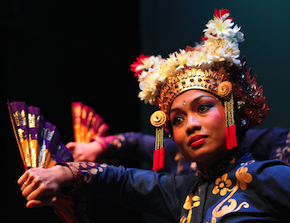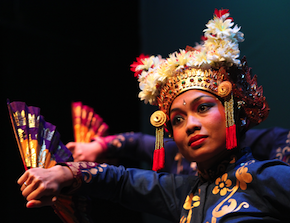
Photos by Ben Belknap
Dance, which is not a mainstay of the symphonic repertoire, bracketed the opening concert of the San Francisco Symphony's season-closing minifestival honoring Benjamin Britten (1913-1976).
With the second half of the concert featuring the 1997 Donald Mitchell/Mervyn Cooke Suite from Britten's 1957 Prince of the Pagodas ballet score, the relevant novelty opening the event was an actual dance performance on the concert stage, by Gamelan Sekar Jaya.
The relevance: the Britten score is influenced by (although does not quote) the music of the Balinese gong orchestra, whose spirit is reflected in the fairytale story of the full-evening ballet choreographed by John Cranko at the beginning of his illustrious career.
Michael Tilson Thomas, himself a gamelan enthusiast, engaged and introduced the acclaimed Gamelan Sekar Jaya from the East Bay, performing a work from the Balinese kebyar repertoire.
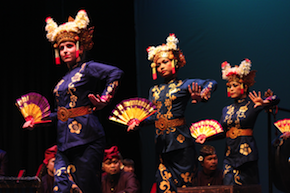
The kebyar ensemble is a modern gamelan orchestra of about 30 musicians, playing metallophones, gongs, flutes, fiddles, drums, and cymbals. Five richly costumed female dancers perform the story to the accompaniment of the ensemble.
On two of the concert series, including Thursday, the work is Gamelan Pengleb, for which the ensemble traveled to Bali to learn an authentic reconstruction of the century-old story.
As Balinese dance movements and gestures are unfamiliar to the Western audience, only glimpses of its meaning can be appreciated readily, but the explanation is that it shows the oppression and eventual liberation of young women.
The June 13 and 15 gamelan on the SFS schedule is Tabuh Pat Jagul, a temple work of quiet mantras.
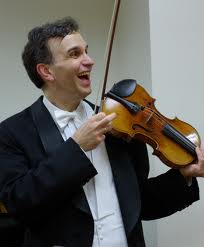
Photo by Martin Chalifour/IMG
Promised to run 90 minutes, the concert took closer to two hours because of the time required by the extensive stage rearrangement after the gamelan.
The wait was well worth it as the orchestra regained its place and Gil Shaham appeared to perform Prokofiev's Violin Concerto No. 2, a 1935 work that's strikingly different from the composer's dazzling virtuoso concertos.
Shaham, a brilliant musician attractively free of the trappings of stardom, is perfect for this mostly muted, austere, simple, unshowy concerto. Under MTT's direction, Shaham and the orchestra shone in the performance, both in the first two movements and in the contrasting third one.
It is only at the end that the dazzling intensity that characterizes his piano concertos makes its appearance, somewhat scaled down, Prokofiev "indulging his appetite for dissonance and fierce accent, so firmly kept in check" until now, in program annotator Michael Steinberg's words.
But, just once, even without Steinberg's help, some vital connections were easy to make. What the late musicologist called melodies "so sweetly lyric that we could almost imagine a page from one of the Romeo and Juliet notebooks" were easily recognized — throughout the concerto — as quotes, harmonies, and the atmosphere of the ballet score, which is heard in Davies Hall almost as often as across Grove Street, at San Francisco Ballet performances. It was refreshing to hear this virtual variation of R&J.
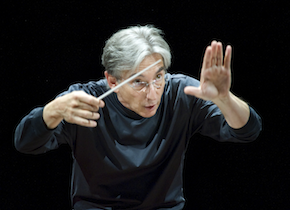
Almost as different as the violin concerto is from "typical Prokofiev," The Prince of the Pagodas is "unusual Britten." There are long, spiky, jaunty passages that are unlike the composer's usual brooding mien, and the exotic orchestration naturally differentiates it.
It is in the use of glockenspiel, xylophone, vibraphone, gongs (just two), triangle, castanets, anvil, tambourine, cymbals, etc. that the gamelan influence is manifested, and what lends the work its distinct sound. And yet, the majority of the work, along with prominent violin and English horn solos (Alexander Barantschik and Russ deLuna) make it far more English/Western than anything else.
Britten's extensive — near excessive — mixing of styles, semi-quotes and perhaps parodies of several of his contemporaries both complicates the score and makes it fascinating.
Special mention is to be made of MTT's varied interests and equal mastery of divergent styles these concerts represent. To take his versatility and omnivorous involvement to its logical (if bizarre) end, he should have sat in with the gamelan; we cannot know what he did backstage while Gamelan Sekar Jaya performed.

